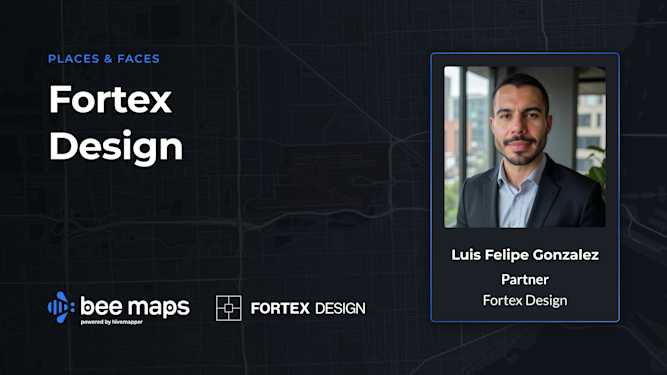The Latest Buzz
HONEY Bursts: On-Demand, Fresh Map Data for Businesses

Hivemapper’s bounty feature for targeted mapping provides customers fresh data for specific locations.
In today’s dynamic world, map data has become critical for the automotive industry, mapping and navigation applications, real estate developers, utilities companies, and insurance companies. It fuels decision-making, drives innovation, and keeps companies competitive.
But the value of map data is directly linked to its freshness. Outdated or stale map data can lead to misinformed decisions, missed opportunities, and even financial losses. This is where the concept of on-demand, fresh map data comes into play, giving businesses a powerful tool to stay ahead of the curve. In this blog post, we’ll explore how businesses can source fresh map data with Hivemapper’s new HONEY Bursts feature.
If you’re an autonomous vehicle manufacturer, you need relevant map data for your cars. Without up-to-date information on new roads, turn restrictions, and construction zones, your cars can't drive safely. You’re probably frustrated with how outdated, spotty, and expensive maps are. Sending a dedicated mapping vehicle or fleet to collect the map data you need is too costly and time consuming. Imagine having access to a community of drivers who can collect map data on demand for you. Simply highlight a geographic area and let Hivemapper contributors provide the map data you need quickly and cost-effectively.
Roads are dynamic. Today’s best digital maps don’t offer a dynamic, up-to-date representation of our surroundings. Just imagine your commute to work. You’re on the highway and taking your usual route. A mile ahead, orange traffic cones and construction barriers block off one lane. A construction crew is preparing to resurface the road. Heavy machinery rumbles to life, and workers in bright vests and hard hats start milling the old asphalt. If your car is equipped with an Advanced Driver Assistance System (ADAS), it will struggle to plan a safe and optimal path unless it has a map with this temporary map feature.
In some rapidly growing urban areas, new roads, intersections, and addresses are added faster than maps are updated. If you’re running a delivery fleet like FedEx or a rideshare service like Uber, the efficiency of your operations depends on an accurate representation of the world. Maps are stale and spotty because specialized mapping vehicles are expensive to own and operate. In the example below, the Google Street View image is from May 2022 and shows a road where Hivemapper captured a construction site recently.
How the decentralized mapping network works
Hivemapper is a two-sided marketplace of map contributors and map consumers, with Map AI at its core. Purpose-built dashcams are the network’s eyes, and Map AI is the brain. Over 8,000 dashcams across more than 90 countries are currently on the road collecting imagery from everyday drivers. Contributors are also playing Map AI Trainer games that train Hivemapper’s machine learning models and validate their outputs. Map consumers access critical map data via our Map Image API and Map Features API. New APIs are coming soon.
How you can source the map data you need
In just 8 months, the Hivemapper community has mapped 5 million unique road kilometers, representing more than 8% of the world’s roadways. If you want a specific location to be mapped, simply highlight an area for prioritized coverage and set a Burst bounty. Contributors who drive through these targeted areas can earn bonus HONEY rewards on top of their regular rewards. It’s up to you to decide how much this coverage is worth to you.
Every week, Hivemapper designates particular locations as Burst zones based on customer demand and network coverage requirements. Once live, the Burst appears prominently in the Hivemapper app. This notifies contributors of the zones where increased activity will receive bonus rewards. We announce new zones on Fridays on our Twitter account and Discord server and activate them on Mondays.
Bursts launched on Aug. 31, and have already demonstrated their effectiveness at targeting specific locations for real-time map updates.
Get multiple shots on goal
Hivemapper’s decentralized network doesn't just map the world; it continually refreshes the map. Contributors have already covered more than 60 million total road kilometers in less than a year, refreshing frequently traveled routes multiple times.
Bursts deliver more than just fresh map data in targeted areas of interest — they get you multiple shots on goal. For example, you can see busy intersections 4-5 times in one week with Hivemapper dashcams. Frequent data collection functions as a validation mechanism, increasing the accuracy of map data. Sectors like autonomous vehicles depend on precise positioning of road features.
The average road in Hivemapper’s database has been mapped 10 times this year, providing multiple layers of validation. This frequency far outpaces traditional services like Google Street View, which might only update a specific area every few years.
Take small towns like Wilcox and Yuma in Arizona, for example. Google Street View coverage in these towns are 12 years old. Other small towns in the state don’t have any imagery at all. But Wilcox and Yuma saw Bursts recently, and you can see fresh map coverage on the Hivemapper Explorer.
“It’s crazy to see that for a few thousand HONEY tokens we can get eyes somewhere that hasn’t been seen in 12 years,” remarked Jay Alberts, Head of Product at Hivemapper.
This is just the beginning. HONEY Bursts will grow with customer demand, reinforcing Hivemapper’s mission to map the world collectively, accurately, and efficiently.
__
Follow us on X (Twitter) and join the community on Discord.
Share Post





